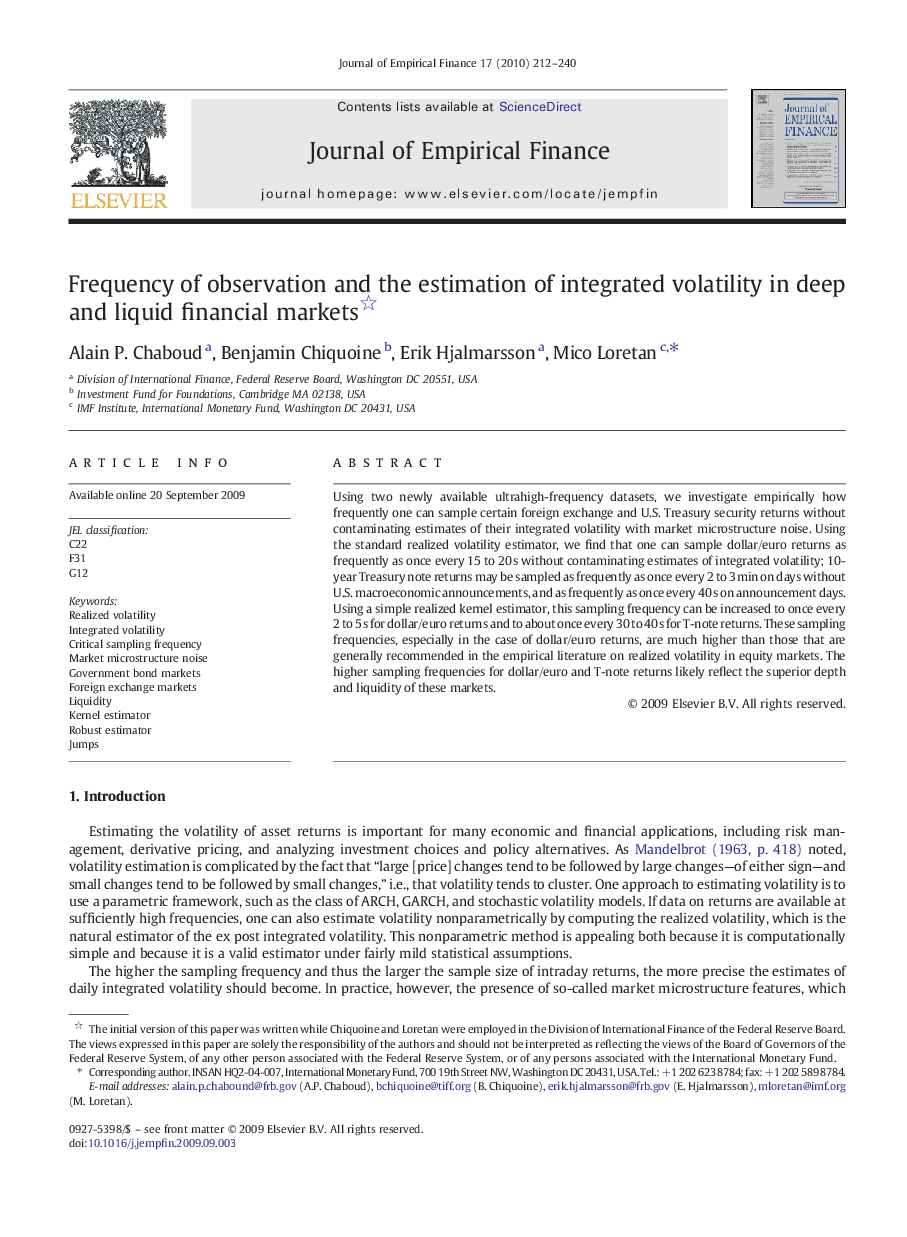| Article ID | Journal | Published Year | Pages | File Type |
|---|---|---|---|---|
| 958588 | Journal of Empirical Finance | 2010 | 29 Pages |
Using two newly available ultrahigh-frequency datasets, we investigate empirically how frequently one can sample certain foreign exchange and U.S. Treasury security returns without contaminating estimates of their integrated volatility with market microstructure noise. Using the standard realized volatility estimator, we find that one can sample dollar/euro returns as frequently as once every 15 to 20 s without contaminating estimates of integrated volatility; 10-year Treasury note returns may be sampled as frequently as once every 2 to 3 min on days without U.S. macroeconomic announcements, and as frequently as once every 40 s on announcement days. Using a simple realized kernel estimator, this sampling frequency can be increased to once every 2 to 5 s for dollar/euro returns and to about once every 30 to 40 s for T-note returns. These sampling frequencies, especially in the case of dollar/euro returns, are much higher than those that are generally recommended in the empirical literature on realized volatility in equity markets. The higher sampling frequencies for dollar/euro and T-note returns likely reflect the superior depth and liquidity of these markets.
